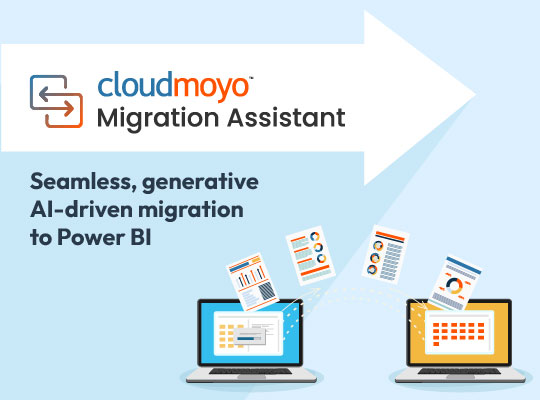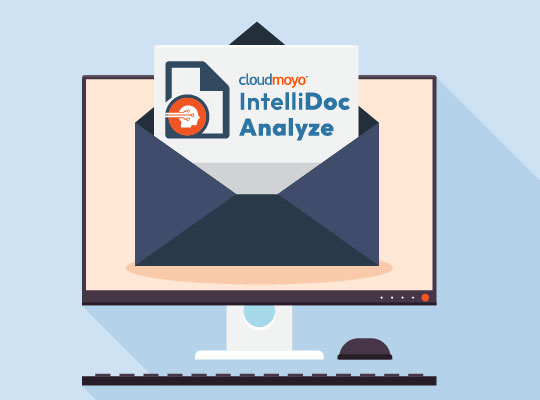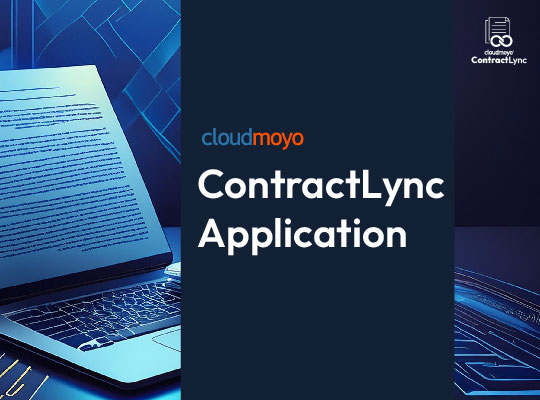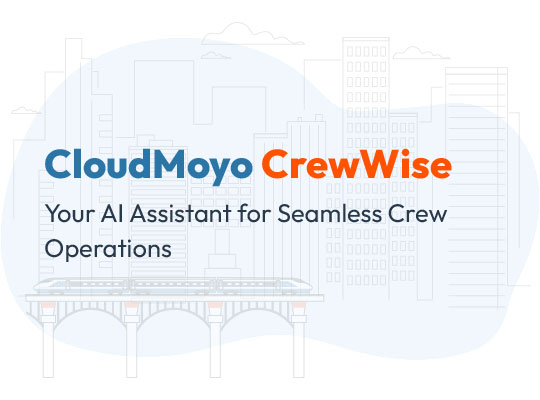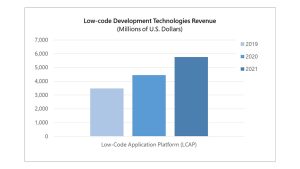This article was developed out of a conversation on a CIO panel discussion at the 2021 Kansas City IT Symposium by IT industry leaders Manish Kedia (Co-Founder & CEO, CloudMoyo), Rich Miller (VP Information Technology, Burns & McDonnell), Jason Kephart (CIO, Terracon), and Josh Edwards (Global Director of Data Science & Operations, Black & Veatch).
The concept of the world, and the IT and business world, as a changing force, is nothing new. The term “digital transformation” itself has long been understood and used to refer to the forces of change that propel an organization to adapt and grow.
Yet in the last 3 years, we’ve seen some shifts in the ways that organizations look at digital transformation. The need to become more resilient and agile has become more of a necessity as companies navigate changing markets, consumer demands, increased competition, and—most recently—a global pandemic that rattled the world.
At the same time, data has continuously been moved to the cloud, which has been followed by the migration of applications to the cloud. The question remains of how to put this data to use and make it assessable across applications, how to bring functions, data, and applications together. While it’s great to have data for diagnostics, predictive capabilities, or visualization purposes, we’ve seen a new phenomenon arise. Business users are asking for applications and functionalities to innovate on-the-fly.
These all combine into a pressing need to innovate at “” in order to gain that competitive edge. What we’ve seen that translate into is the need to develop and deploy customized applications that solve for real-world, pressing business problems. Many of these apps are “lite” in the sense that they require less coding and are lightweight, and “speed” in the sense that application development timelines are pressed to be shortened.
IT departments are hard-pressed to keep up with the pace of demand. Coincidentally, these needs have led to an increased adoption in the latest app development technology, low-code and no-code platforms. These platforms provide templates and functions for businesses to quickly build and deploy custom apps with less coding or development time involved.
Fabrizio Biscotti, Research Vice President at Gartner, describes this situation well: “The economic consequences of the COVID-19 pandemic have validated the low-code value proposition. Low-code capabilities that support remote work function…will be offered with more elastic pricing since they will be required to keep the lights running.”
The value proposition of low-code technology
Low-code development technologies continue to grow over the last few years, including adoption of Microsoft Power Apps, which has grown 2-times from where it was in 2019, according to Microsoft. Data from Gartner shows that revenue growth from low-code development technologies has increased 65.6% between 2019-2021 alone.
There’s several value-adds that are driving this adoption. To be honest, we’re facing a lot of “big hairy problems”, but business users don’t necessarily want to become developers or data modelers. They have an intimate knowledge of the problem or opportunity, and IT can play a role in facilitating the creation of tools (i.e. apps) to solve problems or improve processes. In short, you need to be opportunistic about tackling this low-code opportunity, where you can deliver an app in days instead of weeks or a month, in order to support the kind of agile innovation required.
The vision for the future
There’s been a fair share of buzz in the market recently about these new low-code platforms. But the truth you distill from this noise is, essentially, the power of bringing data, processes, and apps together to democratize and govern data, enhance collaboration, accelerate time-to-market, and automate business processes. No longer do you need to know .NET or Java to build an app that solves for a pressing problem. With controlled data access, you can collaborate better, whether within IT or within the business. This also means that you need to have a single source of truth for enterprise data, which we’ll talk more about later.
Keep in mind that these low-code applications aren’t going to replace your standard SAP and Oracle apps. But what these apps can do is empower both IT and business users to integrate data and functions, building solutions under a self-service model that takes you to the next step of the evolution of digital transformation.
The dialogue that IT leaders should be having with other leaders in the business is around the considerations you should make when evaluating adoption of low-code technology—such as how accessible your data is and what your business needs are. You also need to think about the role that IT plays in readiness, adoption, and governance of low-code apps. Let’s take a look at each of these considerations and how IT leaders are approaching them.
- Establishing readiness
One of the key first steps in the adoption process is, first, making sure you are ready for successful usage of low-code apps. What you don’t want to miss out on is introducing these apps to the larger business, understand the use cases and problems, determine who would be creating apps, and understand the role IT would play in facilitating all this.
3 questions that IT leaders can ask as they consider adoption of and readiness for low-code platforms are:
- Is our data ready?
- Who are my citizen developers or solution makers?
- What are our use cases and business problems?
Leaders should really think through these questions, to avoid creating islands of information and functionalities spread across applications. By first understanding the value of creating these apps (i.e. to solve business problems), and understand how they complement existing apps, you can create value with low-code technology rather than add to the noise!
According to Jason Kephart, CIO at Terracon Consultants, when it comes to determining readiness for low-code apps, “You need to understand the business. You should never be doing anything unless there is a business need.”
Once there is a clear understanding of the business value, there needs to be an assessment of enterprise architecture and data maturity. You should be looking at how accessible data is and if it’s fit for use. Don’t underestimate the time it’ll take to get data ready.
- Approaching adoption
Another key role that IT plays in low-code adoption is in ensuring successful adoption, from selection of the low-code application development platform, to training of power users, and measurement of successful adoption. According to Rich Miller, VP Information Technology at Burns & McDonnell, “IT organizations can really leverage this development and technology to address a lot of problems that we have…IT plays a very important role in facilitating for the community of citizen developers in your organization.”
This is no new shiny technology with harbingers of shadow IT! Instead, IT plays a pivotal role in facilitating the development of low-code apps, along with access to needed data. IT is also going to drive the strategy of how to scale as app adoption increases in the organization.
- Navigating governance
The third consideration is around governance, and how to avoid creating multiple sources of truth due to a proliferation of apps and limited governance. As you embark on adoption of low-code technology, establishing governance over data will be key to making sure citizen developers are able to the data they need to make better decisions without creating “virtual copies”. IT will drive management of access tiers, policy governance, and setting up of custom connectors or integrations with other business applications.
“If you’re thinking about data as a product in your organization,” says Josh Edwards, Global Director of Data Science & Operations at Black & Veatch, “you’re well along in your maturity curve and you’re ready to put governance around it, security around it, unleash it to your citizen developers.”
We suggest spending time understanding your enterprise data assets, getting them organized, putting light governance around them, and then partnering with the business around their low-code development, making sure that users have access to the right data sets.
Jason Kephart has more to say on making sure you have the right data governance in place, noting that “I do think that data is a little more difficult to hand over to the business…Although they own and create most of that data. The management around it, the governance around it, the cleansing of it, all of those pieces require some specialized skills and disciplines with your teams.
Being able to get out of the way of all those thousands of gnats that attack your IT organization every day, week, and month and enable people to take care of those problems themselves, is a great benefit to the organization after all.”
Best practices and guidance for IT
Low-code app development gives IT an answer to a common ask: Make an app to help me solve a specific business problem, automate this workflow, or enhance collaboration. In thinking about the best practices to navigate the asks, we recommend that IT be selective in the asks and really raise the bar for their organization. This means being opportunistic about what apps you actually facilitate the creation of. Don’t just enable the building of apps for custom development. Instead, estimate what you think it’ll cost to build the custom app and whether building a low-code app is the best way forward.
As we mentioned earlier, low-code adoption is not shadow IT. This is a different, and more effective, way to partner with your organization, govern and manage access to data, and provide guidance and frameworks for building apps very quickly to solve pressing problems today. This checks the boxes to make your enterprise a little more agile, deliver on business solutions more quickly, and enable the business side of the technology equation.
Low-code application development is truly the next evolution of digital transformation, very fit for the current challenges and opportunities are facing as they look for solutions to empower business users, deliver solutions faster, and improve productivity.










